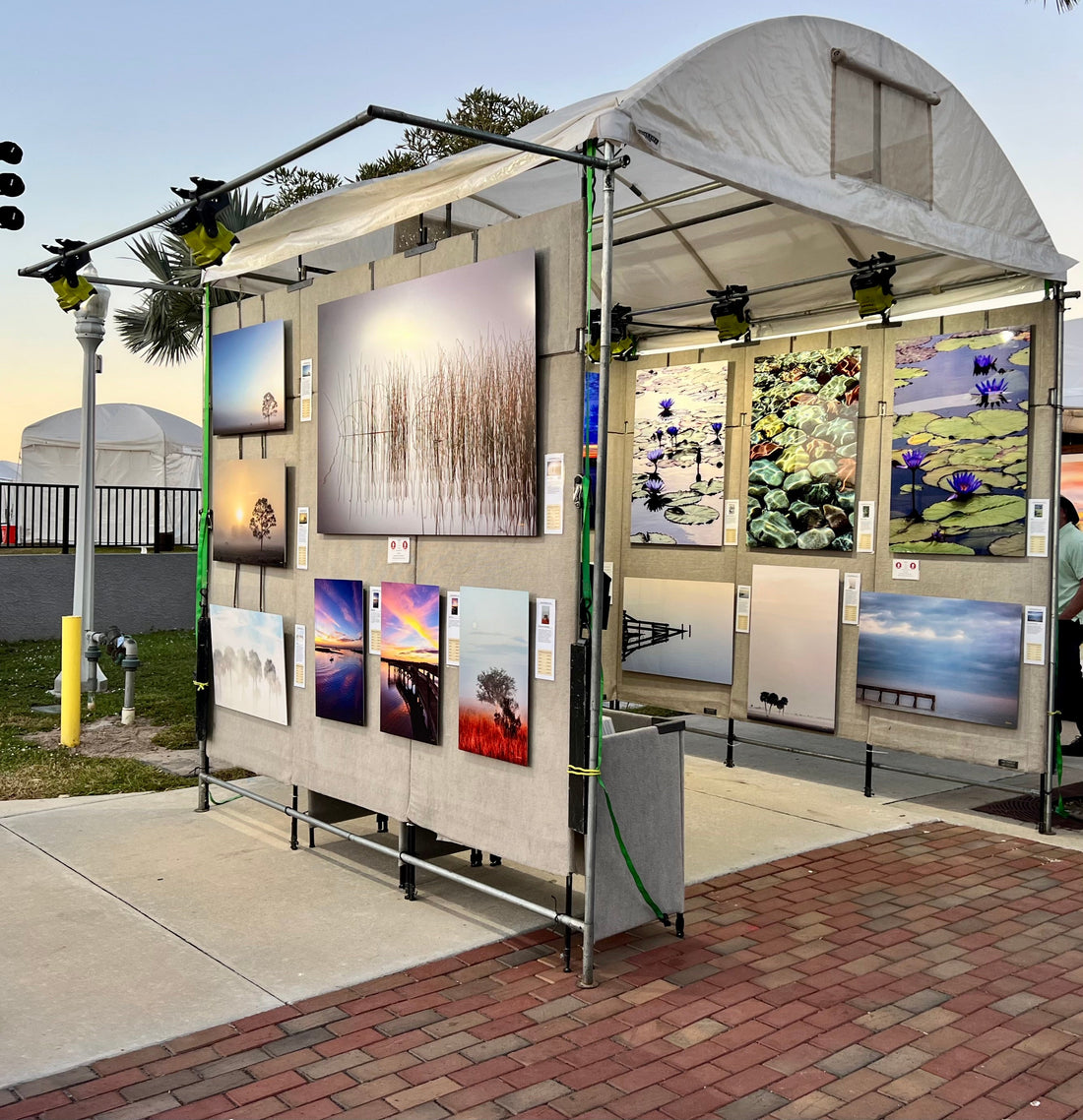
The Truth About Life on the Art Show Circuit
Share
The Truth About Life on the Art Show Circuit
by Oscar Matos Linares
If I’m being honest, I wouldn’t recommend this life to just anyone.
Traveling the art show circuit isn’t glamorous. It’s a lot of hard work—physically, mentally, and emotionally. You’re loading and unloading heavy materials, driving long distances, setting up in unpredictable weather, and constantly working to connect with audiences. Behind every polished booth is an artist who’s juggling more than just creativity.
And yet… here I am, still doing it.
Why? Because at its core, art is something I need to do. It started as a way to relax, to escape the everyday struggles—and it grew into something bigger. But to keep creating, the work needs an audience. It needs to be seen, talked about, and ultimately collected. Art shows offer that. They provide a direct connection to people who respond to the work—not just gallery owners or critics, but real people who fall in love with a piece and want to live with it.
Over the years, I’ve seen the art show landscape change. Many of the top shows now have strong Emerging Artist programs. Coconut Grove, St. Louis, Des Moines, and Ann Arbor (The Guild) are among the best. These programs exist because shows understand the need to bring in fresh talent as veteran artists step away—whether from age, burnout, or the sheer physical toll of this life.
But there’s a catch.
What a show considers “great art” doesn’t always line up with what artists themselves value. Lately, I’ve noticed a push toward more traditional presentations and a strong emphasis on technical skill and nostalgia. Now, don’t get me wrong—technique is important. But technique alone doesn’t make great art. Vision does. A perfectly executed piece without a clear voice or message can still fall flat. Jurors sometimes prioritize flawless execution, but for me, it’s the soul of the work that matters most.
Eventually, if you stick with this life, something shifts. You realize that to keep creating, the art has to support itself. You need time—not just to make, but to experiment, to fail, to grow. And that means the art needs to sell. For many of us, that’s when art transitions from a passion to a profession.
Is it hard? Absolutely.
Is it worth it? For me, yes.
But I won’t sugarcoat it: this path requires grit, resourcefulness, and a deep love for the process. If you’re just starting out, consider applying to those Emerging Artist programs—they can be invaluable. And if you’re already on the road, I see you. Keep showing up. Your voice matters.